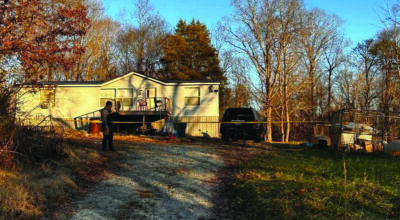COVID-19 research study launched in Kannapolis by Duke University, NC Department of Health and Human Services
Published 6:19 pm Monday, June 22, 2020
KANNAPOLIS — A new research project launched under the MURDOCK Study at Duke University will focus on COVID-19 as the health of hundreds of volunteers are studied over the course of at least six months.
Called the MURDOCK Cabarrus County COVID-19 Prevalence and Immunity (C3PI) Study, work will focus on a smaller cohort from a larger group of volunteers in the MURDOCK Study, which was founded in 2008. The MURDOCK Study focuses on the health of volunteers over time to identify links between diseases and disorders.
The new, smaller study focuses on COVID-19 and involves a partnership between Duke University School of Medicine and North Carolina Department of Health and Human Services. N.C. DHHS is also collaborating with the University of North Carolina at Chapel Hill and East Carolina University to understand COVID-19 changes in Chatham and Pitt counties.
Since the Duke COVID-19 study is made up of a cohort of MURDOCK Study participants, it was able to be put together quickly by drawing on the already existing pool, said Dr. L. Kristin Newby, its co-principal investigator and faculty director for Duke’s Clinical and Translational Science Institute’s Translational Population Health Research group.
Participants in the study will be doing online, biweekly surveys about their health, according to the news release. A smaller subgroup of the participants will also be tested for COVID-19 infection and for antibodies that indicate prior infection and potential immunity.
“It’s a study meant to look at the spread of disease in a representative population over time,” said Dr. Chris Woods, a professor of medicine, pathology and global health at Duke University and chief of Infectious Diseases at the Durham VA Health System. “We’re trying to get a big view of what’s happening in the state across representative populations.”
The idea is to be able to answer the basic epidemiological questions, he said. Those questions are who has the virus, where they are and what is happening over time.
Since the sample for the study is representative of Cabarrus County by factors such as race, ethnicity and gender, it can also look at whether and how different sub-populations are being affected disproportionately, Woods said. That representation is crucial, he said. Most data available now is not representative of larger populations because much of it is from hospitals or testing centers.
Initially, the study will allow scientists to understand the basics of the virus in this area. As time passes, it can help provide evidence and context for changes in rates of infection and antibodies.
The questions included in the study’s survey are broad, Newby said. They range from the social and economic impact of the virus to health and symptoms and whether a household is following guidelines. That way, the researchers can understand context behind rates of infections and antibodies.
“We want to understand the impact of COVID-19 on the community at an individual and household level, to understand how COVID is or is not spreading in the community, and what factors may be driving that,” Newby said.
That context can in turn help inform guidelines and policies. Part of the challenge of responding to COVID-19 has been the lack of such data on the virus because it is new. So the study is “an opportunity to inform those policies,” he said.
One key question to be studied includes how close the overall population and subgroups get to herd immunity — when a certain number of people in a population are resilient to the spread of the virus. Antibodies may indicate potential immunity to COVID-19, although many questions about immunity to COVID-19 remain, Newby said. Those include how durable immunity is over time. Those questions can also be studied in the new research.
“There are so many questions because there is so little known,” Newby said.
Another set of questions to explore are those pertaining to asymptomatic people infected with COVID-19.
Dick Snyder is part of the MURDOCK Study. He volunteered initially “to help advance the cause of medicine,” he said.
Now, he’s volunteered to be part of the C3PI cohort as well. He has a lot of questions about COVID-19, he said. Being part of the study might help find some of the answers. Beyond that, it can help people in the future as new knowledge helps scientists combat the new virus.
“I’m doing it for my granddaughter,” he said.




